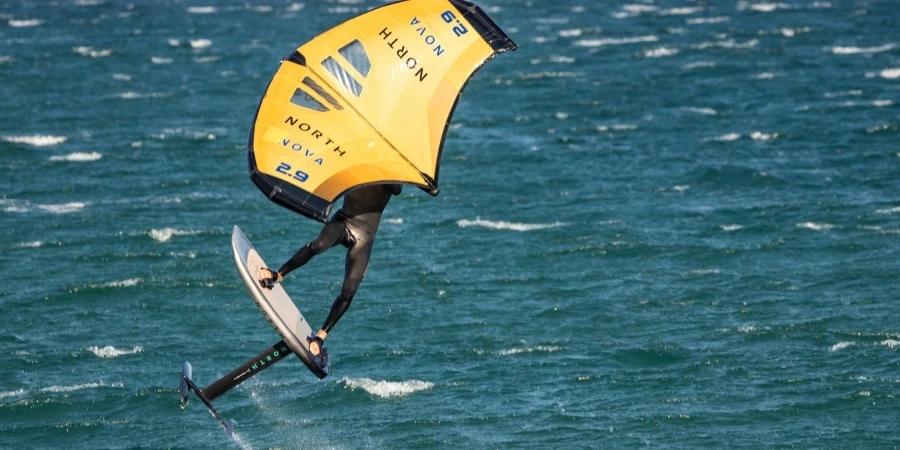Wing foil boarding, a thrilling water sport that combines elements of windsurfing, kitesurfing, and stand-up paddleboarding, has taken the sports and accessory industry by storm. This innovative sport involves riding a hydrofoil board while being propelled by a handheld wing, offering enthusiasts an unparalleled sense of freedom and excitement on the water. As the popularity of wing foil boarding continues to soar, it is essential to understand the market dynamics, key players, and innovations driving this trend.
Table of Contents:
Market Overview
Cutting-Edge Materials and Design
Technological Features Elevating Performance
Benefits and Functionality for Enthusiast
Target Audience and Market Segmentation
Market Overview
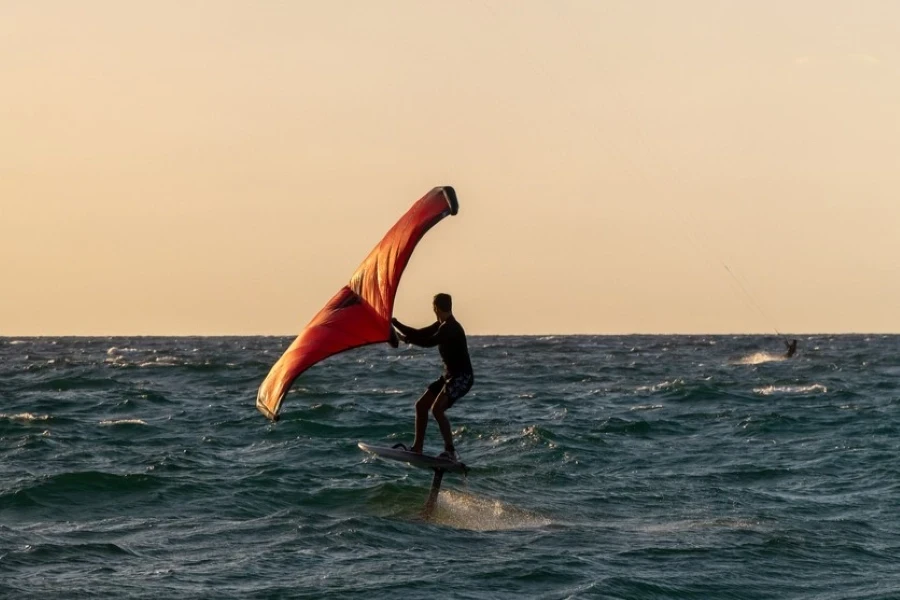
The Rise of Wing Foil Boarding
Wing foil boarding has experienced a meteoric rise in popularity over the past few years. According to a professional report, the global market for wing foil boards has seen significant growth, with a compound annual growth rate (CAGR) of 7.5% from 2019 to 2023. This surge can be attributed to the sport’s unique blend of adrenaline-pumping action and accessibility, making it appealing to a wide range of water sports enthusiasts.
The sport’s growth is further fueled by the increasing number of competitions and events dedicated to wing foil boarding. These events not only showcase the sport’s thrilling nature but also help to build a community of passionate riders and foster innovation within the industry. As more people discover the joys of wing foil boarding, the demand for high-quality equipment continues to rise, driving market expansion.
Key Market Players and Innovations
Several key players are at the forefront of the wing foil boarding market, driving innovation and setting new standards for performance and design. Companies such as Duotone, F-One, and Naish have established themselves as leaders in the industry, consistently pushing the boundaries of what is possible with wing foil technology.
Duotone, for instance, has made significant strides in developing lightweight and durable wings that offer exceptional control and maneuverability. Their latest models feature advanced materials and construction techniques, ensuring that riders can enjoy a smooth and responsive experience on the water.
F-One, another major player, has focused on creating versatile and user-friendly wing foil boards that cater to riders of all skill levels. Their innovative designs incorporate features such as adjustable foil positions and customizable foot straps, allowing users to fine-tune their setup for optimal performance.
Naish, known for its cutting-edge technology and high-performance gear, has introduced several groundbreaking products that have set new benchmarks in the industry. Their hydrofoil boards, for example, are designed with advanced hydrodynamic principles, providing riders with unparalleled lift and stability.
In addition to these established brands, several emerging companies are making waves in the wing foil boarding market. These newcomers are bringing fresh ideas and innovative solutions to the table, further driving the sport’s evolution and growth.
Cutting-Edge Materials and Design
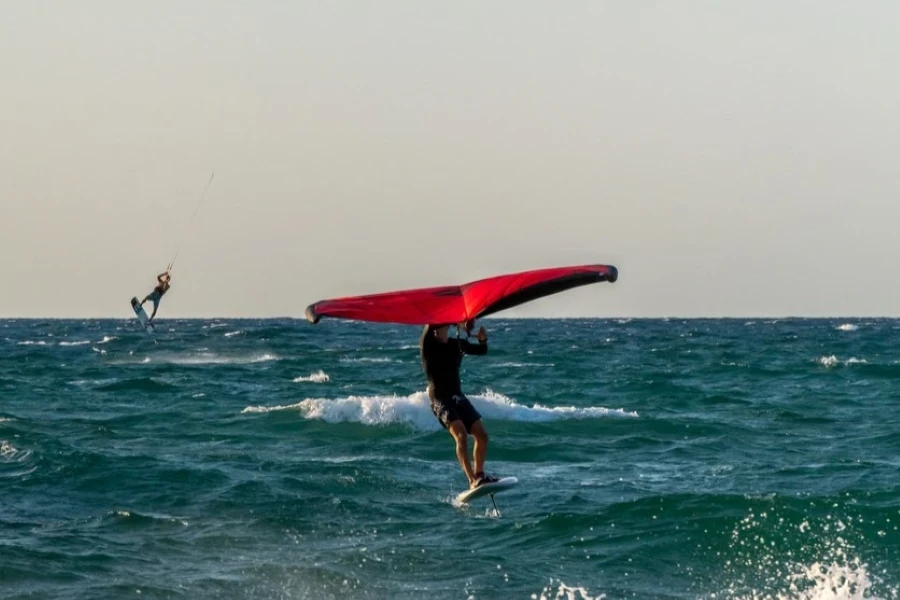
Lightweight and Durable Materials
The evolution of wing foil boards has been significantly influenced by advancements in materials. Modern wing foil boards are crafted using lightweight and durable materials that enhance performance and longevity. According to a professional report, the use of high-quality PVC, carbon fiber, and hybrid constructions has become prevalent. These materials offer a perfect balance between weight and strength, ensuring that the boards are not only easy to handle but also robust enough to withstand the rigors of water sports.
For instance, the Bote Wulf Aero, a popular stand-up paddleboard, utilizes a single-layer PVC construction. While this design is lightweight and cost-effective, it may flex under weight, which can affect performance. On the other hand, boards like the Tower All Around S-Class feature a more durable fusion construction, often referred to as “double-layer,” which provides enhanced stability and durability over time. This double-layer construction allows the board to maintain a higher PSI, resulting in a stiffer and more responsive ride.
Innovative Board Shapes and Sizes
The design of wing foil boards has also seen significant innovation, with manufacturers experimenting with various shapes and sizes to optimize performance. The trend towards shorter and wider boards, also known as volume-shifted boards, has gained traction. These boards, such as the Lib Tech T.Rice Orca and Ride Warpig, offer excellent stability and floatation while maintaining maneuverability in tight spots. The increased width is particularly beneficial for riders with larger feet, preventing toe drag and enhancing overall control.
Moreover, the integration of advanced fin setups has further refined board performance. Single-fin setups are favored for their ability to maintain speed and track straight, making them ideal for touring and racing. In contrast, tri-fin configurations, which include thruster and 2+1 setups, provide superior stability and maneuverability, making them suitable for recreational and specialty boards. The flexibility to customize fin setups allows riders to adapt their boards to different water conditions and personal preferences.
Technological Features Elevating Performance
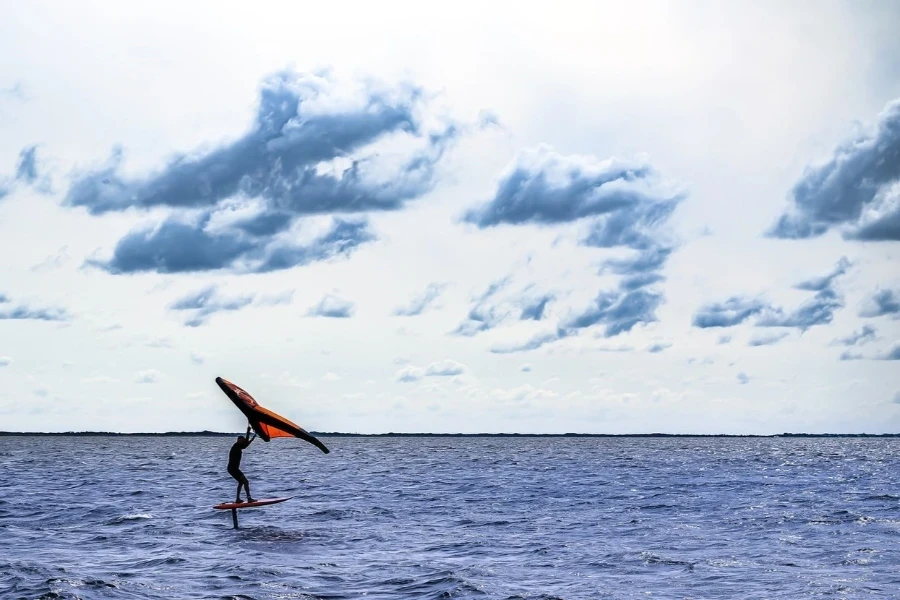
Advanced Foil Technology
The incorporation of advanced foil technology has revolutionized the wing foil board industry. Foils, which are essentially underwater wings, lift the board above the water’s surface, reducing drag and allowing for smoother and faster rides. Modern foils are designed using hydrodynamic principles to maximize efficiency and performance. They are typically made from high-strength materials like carbon fiber and aluminum, which provide the necessary rigidity and durability.
The development of modular foil systems has also been a game-changer. These systems allow riders to interchange different foil components, such as wings and masts, to customize their setup based on specific conditions and skill levels. This adaptability ensures that both beginners and experienced riders can optimize their performance and enjoy a tailored riding experience.
Integration of Smart Features
The integration of smart features into wing foil boards is another trend that is elevating the sport. Some high-end boards now come equipped with GPS tracking, performance monitoring, and connectivity features that allow riders to analyze their sessions and track progress. These smart features provide valuable insights into speed, distance, and other performance metrics, enabling riders to fine-tune their techniques and improve their skills.
Additionally, the use of app-based platforms allows riders to connect with a community of enthusiasts, share experiences, and access training resources. This digital integration not only enhances the overall riding experience but also fosters a sense of community and collaboration among wing foil enthusiasts.
Benefits and Functionality for Enthusiasts
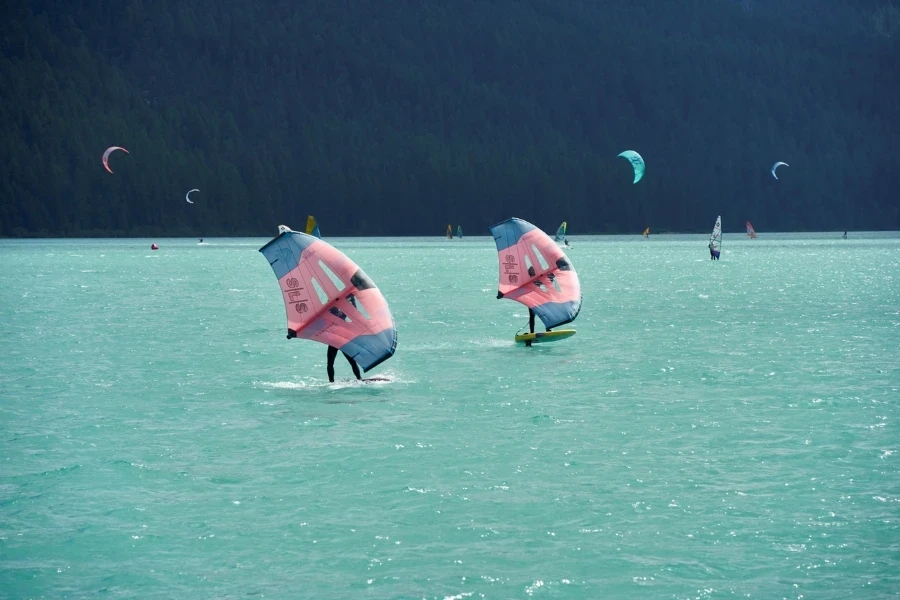
Enhanced Maneuverability and Speed
One of the primary benefits of modern wing foil boards is their enhanced maneuverability and speed. The combination of lightweight materials, advanced foil technology, and innovative design allows riders to achieve higher speeds with less effort. The reduced drag and increased lift provided by the foils enable smoother and more efficient rides, making it easier to perform tricks and navigate various water conditions.
The stability offered by wider and shorter board designs also contributes to improved maneuverability. Riders can make quick turns and adjustments with greater ease, enhancing their overall control and confidence on the water. This agility is particularly beneficial for those looking to push their limits and explore new riding techniques.
Versatility Across Water Conditions
Wing foil boards are designed to be versatile, allowing riders to enjoy the sport in a variety of water conditions. Whether it’s flatwater cruising, wave riding, or navigating choppy waters, modern boards are equipped to handle it all. The ability to customize fin setups and foil components ensures that riders can adapt their boards to different environments, maximizing their performance and enjoyment.
For example, boards with single-fin setups are ideal for flatwater conditions, providing excellent tracking and speed. In contrast, tri-fin configurations offer greater stability and maneuverability, making them suitable for wave riding and more dynamic water conditions. This versatility makes wing foil boards a popular choice among water sports enthusiasts who seek a multi-functional and adaptable riding experience.
Target Audience and Market Segmentation
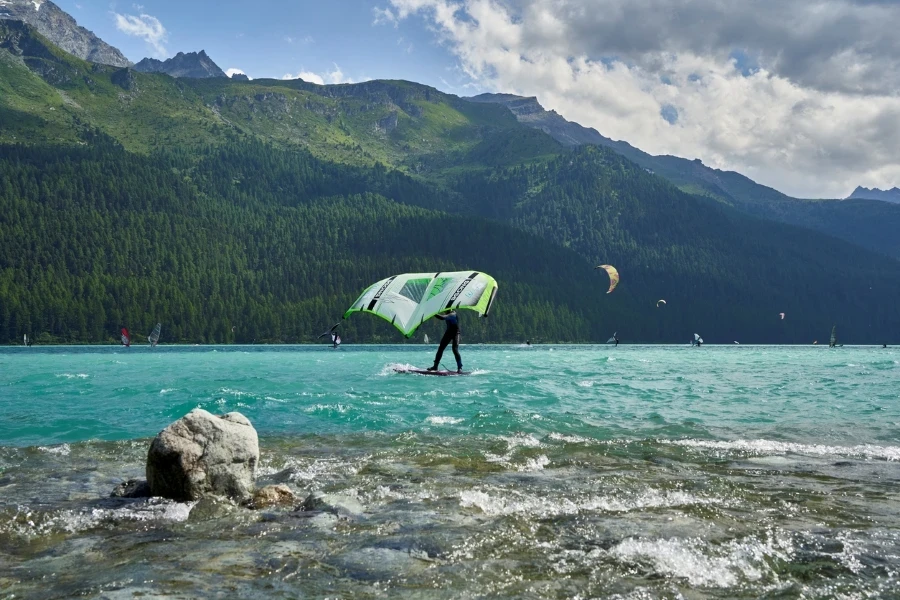
From Beginners to Professionals
The wing foil board market caters to a wide range of skill levels, from beginners to professionals. Entry-level boards are designed with user-friendly features that make it easier for newcomers to learn the basics and build their confidence. These boards often have wider and more stable platforms, making them forgiving and easier to balance on.
For more experienced riders, high-performance boards offer advanced features and customization options that allow them to push their limits and refine their skills. These boards are typically lighter, more responsive, and equipped with advanced foil technology, providing the precision and control needed for competitive riding.
Geographic Trends and Preferences
Geographic trends and preferences also play a significant role in the wing foil board market. Different regions have varying water conditions and riding cultures, which influence the types of boards that are popular. For instance, coastal areas with consistent wave conditions may see a higher demand for boards designed for wave riding, while inland regions with flatwater lakes may favor boards optimized for cruising and touring.
Additionally, the popularity of wing foiling is growing globally, with emerging markets in Asia and South America showing increased interest in the sport. This expanding market presents opportunities for manufacturers to cater to diverse preferences and introduce innovative products that meet the needs of a global audience.
Conclusion
The wing foil board industry is experiencing a dynamic evolution, driven by advancements in materials, design, and technology. These innovations are enhancing the performance and versatility of the boards, making the sport more accessible and enjoyable for enthusiasts of all skill levels. As the market continues to grow, the future looks promising for wing foiling, with ongoing developments poised to further elevate the sport and attract a broader audience.
